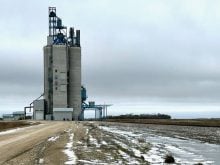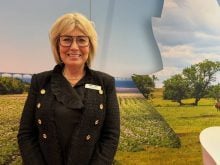There must be a better way, Brett Wagar thought.
Two weeks ago, the west-central Saskatchewan farmer contacted the two seed cleaning plants closest to his farm, both more than 100 kilometres away, to get his canola seed cleaned.
He’s still waiting.
But now the waiting has been made a little easier by a consulting company’s report giving top marks to a farmer-initiated plan to build a one-stop seed cleaning/seed coating plant near Macklin, Sask.
Wagar is heading up the committee attempting to build a million- dollar plant called 2 Grow Seed Coating Ltd. The consultant’s report will be released during a meeting June 12, where the group will be looking for support from residents to raise share capital.
Read Also

Farmland ownership fires up Saskatchewan politicians
Saskatchewan politicians debate the enforcement of farmland ownership laws in the province.
Construction in ’98
Building could get under way following next year’s seeding season, according to Jimmy Pollard, Macklin’s regional economic development officer.
Another seed cleaning company has already approached the group about the possibility of a joint venture, he said.
“The initial reports are positive and there has been interest by a company already in the industry willing to work with us,” said Wagar. “We’re going ahead.”
The increasing popularity of two crops in the region, peas and linola, have added to the growing need for local seed cleaning and coating services, Wagar said.
As the price of wheat falls, pea production in the region will continue to climb, he said.
Cater to export market
The group is considering altering the original plan to include an upgraded seed cleaning facility that will meet export market requirements.
“Farmers need peas cleaned and bagged because in a lot of cases they’re going to Third World countries where bags will be unloaded manually,” Wagar said.
The seed cleaning portion of the plant could possibly get involved in designing applications for micronutrients on seed coats.
Nutrient shortages in soils in the area are a growing problem, Wagar said, and seed coat applications would reduce the cost to farmers.
“You would have to use less if you could incorporate the correct amount on the seed coat,” he said.
“The cheapest way to apply it is right onto the seed.”
Wagar said the facility will mean 20 new jobs for the area.














